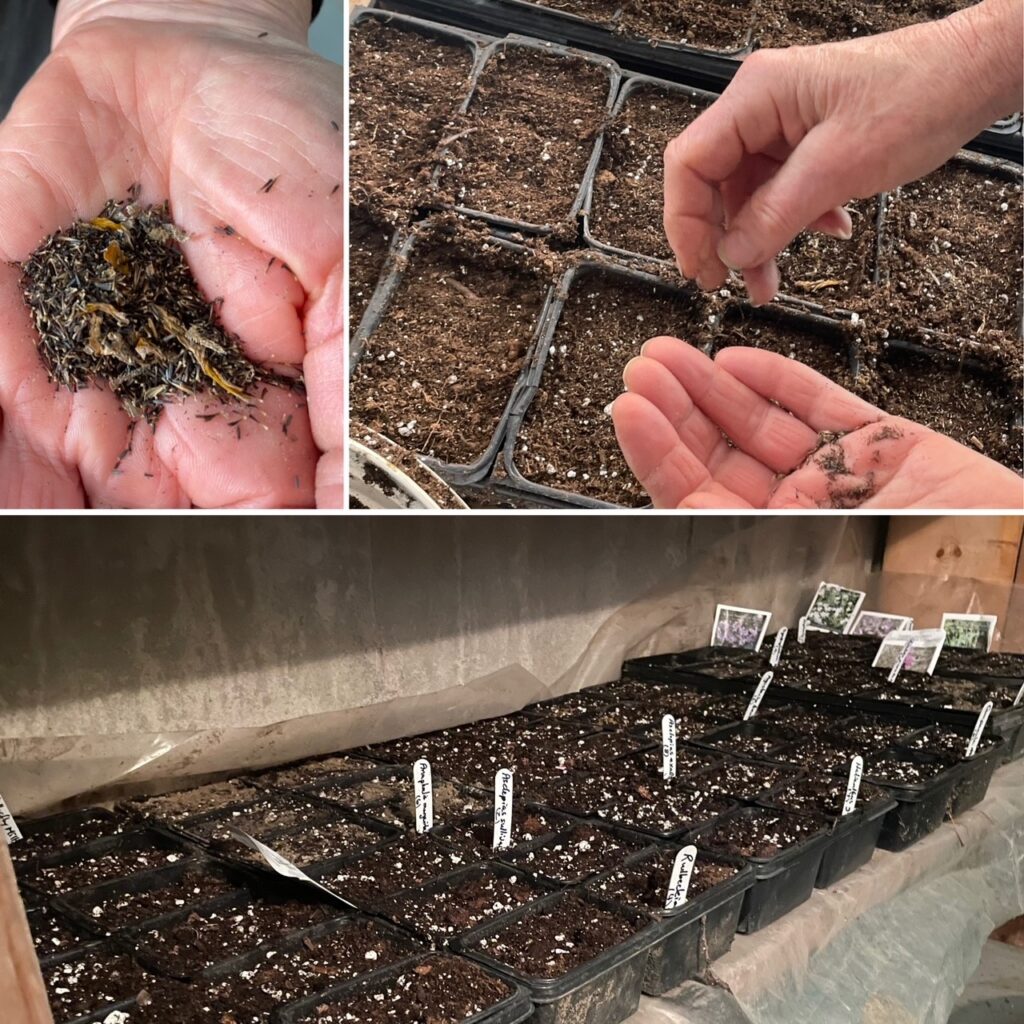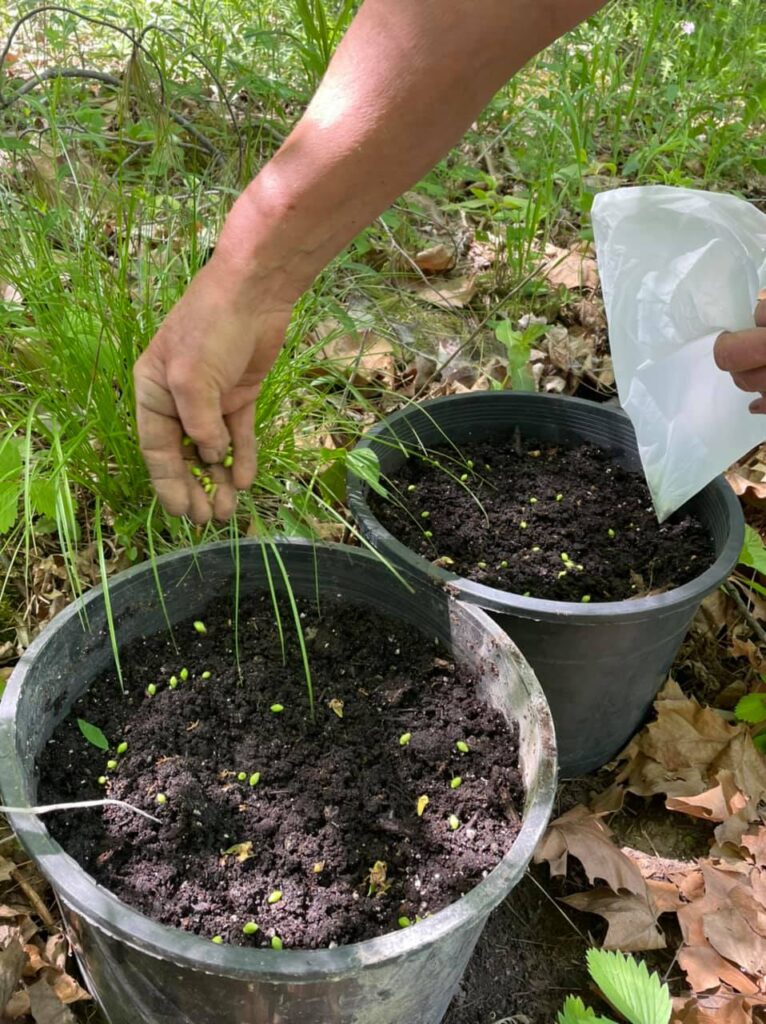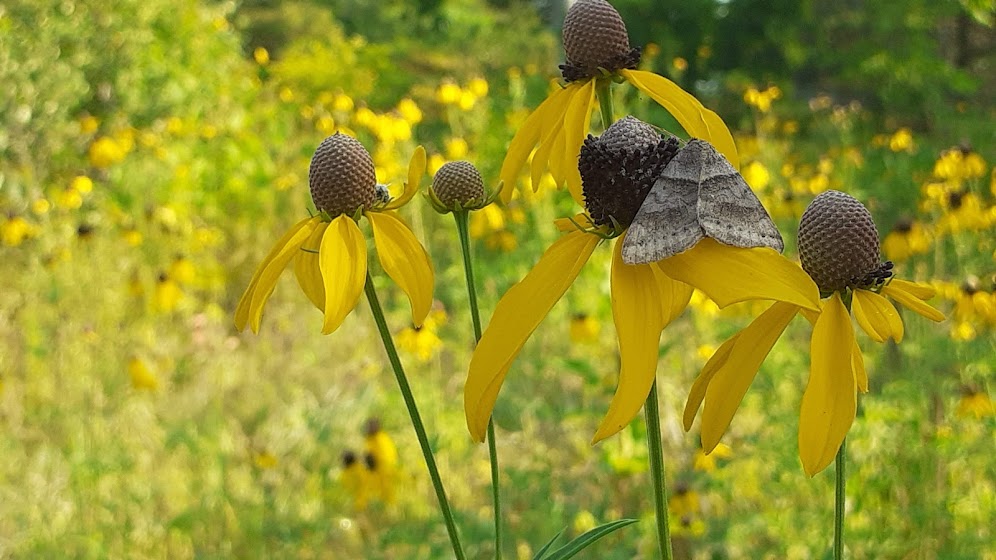There is a natural tendency toward biodiversity built into living things. In plants, this is achieved through cross-pollination and mutation. When a plant produces seeds there will always be some degree of variation within the offspring. Some may fail to thrive while others may be more successful than average.
The parent plant puts a lot of resources into seed production. Many seeds are equipped with a means for travel which is important as this is really the only time a plant can move and it is to the new generation’s advantage to establish itself a distance from the parent plant. A wing or a bit of fluff allows the seed to move through the air. Buoyancy allows it to move by water. A hooked seed takes advantage of passing mammals. Berries and other fleshy fruit enable seeds to travel through the digestive systems of birds and mammals and be deposited in distant places. A nutritious seed appendage is irresistible to ants who not only carry off the seed but bring it underground where it can germinate. Nuts are gathered and buried by squirrels enabling any nuts that aren’t eaten to germinate in the spring.
A seed is essentially a dormant embryo inside a protective wall with a food supply to get it started. The protective wall is broken when conditions are perfect for germination. The embryo has its little stash of food from mom to get it started until it can make its own food, but it needs oxygen, warmth and moisture in its environment to put down roots. Nature has a way of ensuring the greatest chance for success.
Collecting and germinating seeds is a way of supporting biodiversity. Cuttings and division of root stalk is an option for propagating plants, but it is cloning one individual and its unique characteristics. Cross-pollination is important for ensuring diversity within a species. This is facilitated by the many pollinator insects that forage for nectar and pollen and so ensure variation that ultimately promotes better species adaptability and survival.
Some seed collection can be done in the winter but most should have been done by the end of fall. The seeds of early bloomers typically need to be harvested in late spring or early summer. Others mature later in the season. It’s often a challenge to be at the right place at the right time.
In the spring we collected some bloodroot seeds just as the capsules opened. If we had come later, ants would have carried off all the seeds for their tasty appendages. Ants are so effective in seed dispersal of many of the woodland plants that you really have to be there at the right time. Most of the plant species adapted to this form of dispersal must be seeded out fresh. When seeding out bloodroot, trillium, hepatica and some of the other spring woodland flower seeds, you must keep in mind the natural conditions they need to go through before germination happens: the warm summer, then fall and the cold winter with germination possibly happening when warmth returns in the spring or another round of warm, cold, warm with germination happening the second year. Seed dormancy is an adaptation to ensure seedlings have the best chance to make it to adulthood. The best we can do is to either seed outside and allow the natural change of seasons to bring on germination or imitate these conditions by keeping seeded trays in a warm environment, then refrigerating them for a period of time and then placing them back into the warmth. Either way, it takes patience.
Most species that mature later in the season just require a cold period (winter) to break seed dormancy. The period of cold (just above freezing) can be as long as 120 days or as short as 10 days depending on the species.
When a plant’s seeds are inside a fruit, they were designed to be ingested by birds or mammals who then spread the seeds through their poop. This implies that many of the seeds have to be subjected to digestive juices or abrasion to help break through the seed coat. That challenge can involve removing the flesh of the fruit and allowing the seeds to ferment and/or subjecting the seeds to a light sanding (scarification)
Fires are another way to help break seed dormancy. To overcome that challenge, one can pour a bit of boiling water over the seeds and allow them to soak for a day before seeding and placing them into the cold for stratification.
Then, there are the easy ones that germinate within a couple of weeks without any special pretreatment. Many of the grasses will germinate within days of being seeded into warm soil.
When covering seeds, the general rule is to cover the seeds with soil no deeper than the diameter of the seed. But there are a few species that will only germinate if exposed to light. These should just be surface-sown, gently pressed onto the soil and keep moist. This adaption ensures the seed stays dormant until there is sufficient light to ensure it has the ideal conditions for growth.
To effectively work with plants, we need to look at the bigger picture that involves all the interactions and interdependencies between species and their environment. We have so much to learn. With some species, it takes a lot of tries to get it right.
Anyone who sows seeds knows the joy of seeing a little seedling emerge after its long sleep. It’s especially gratifying knowing that our little act is supporting the diversity of life.

Seeding out collected wildflower seed and putting it into the cold storage 
Seeding recently collected Leatherwood seed 
Seedlings sprouting

No responses yet